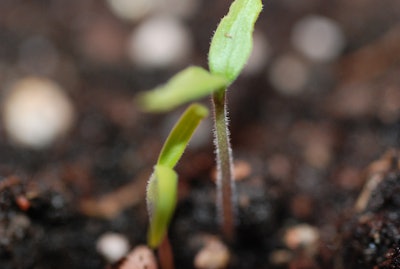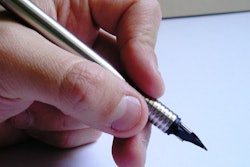
Last month the United States Patent and Trademark Office released its “2014 Interim Guidance on Patent Subject Matter Eligibility.”
Patentable subject matter has increasingly become a contentious topic in the USPTO as well as all levels of courts, including the Supreme Court of United States. All industries relying on patent protection to further their commercial interests, particularly the feed and grain industry that has products closely related to nature-based product, are expecting some clear guidance regarding the product eligibility involved in a patent application.
In this interim guideline, some specific examples are provided and analyzed in detail; however, plants and plant products like grain are not specifically addressed.
The new guidelines simplify a patent examiner’s approach for analyzing subject matter eligibility, and might provide some clarification and guidance to patent applicants in the biotechnology and plant industries. It appears that grain would be eligible if it is significantly different from naturally occurring grain.
Three-step analysis
The new guidelines provide a simplified three-step analysis to patent examiners for determining subject matter eligibility. Consistent with any claim evaluation, the new guidelines direct an examiner to begin by establishing the broadest reasonable interpretation of the claim, then analyze the claim as a whole.
Step 1 asks whether a claim is directed to one of the four statutory categories: process, machine, manufacturer and composition of matter. If a claim is not directed to one of those, the analysis stops there; the claim is not patent eligible. If a claim is directed to one of the four categories, the examiner must then proceed to Step 2.
Step 2A asks whether a claim is directed to a judicial exception: a law of nature, a natural phenomenon, an abstract idea or a product of nature. If a claim is not directed to the judicial exceptions, the analysis stops there; the claim is patent eligible. If a claim is directed to one of four exceptions, the examiner then analyzes the claim as set forth:
- The law of nature/natural phenomenon/abstract idea exception
A claim is directed to a judicial exception when a law of nature, a natural phenomenon or an abstract idea is recited in the claim. If a claim recites these exceptions, the examiner must proceed to Step 2B.
- The product of nature exception
The new guidelines then provide an additional two-part test to determine whether a claim is directed to a product of nature. The two-part test asks: (1) whether the claim includes a nature-based product; and (2) whether the nature-based product has markedly different characteristics from a product of nature.
- A nature-based product can be claimed by itself or as one or more combinations. If a claim recites a nature-based product, the examiner must then conduct the markedly different characteristics analysis (Part 2).
- The markedly different characteristics analysis compares the claimed nature-based product to its naturally occurring counterpart in its natural state. When there is no naturally occurring counterpart to the nature-based product, the comparison should be made to the closest naturally occurring counterpart. A patent examiner may find markedly different characteristics by evaluating the claimed product’s chemical, genetic, or physical structure, biological functions, and/or other chemical and physical properties. Once a markedly different characteristic in a nature-based product is shown, the analysis stops. The claim is patent eligible because the claimed product is not a “product of nature.” If the claimed nature-based product does not exhibit markedly different characteristics, the claim is directed to a “product of nature,” and the examiner proceeds to Step 2B.
Step 2B asks whether any element or combination of elements in the claim is sufficient to ensure that the claim amounts to significantly more than the judicial exception. In other words, the examiner determines whether the claim as a whole contains an “inventive concept.” An examiner should find an “inventive concept” in a claim where the claim includes elements that: (1) improve another technology or technical field; (2) transforms or reduces a particular article to a different state or thing; or (3) adds a specific limitation other than what is well understood, routine and conventional in the field, or adds unconventional steps that confine the claim to a particular useful application. Mere instructions to apply law of nature/abstract idea or to simply append well-understood, routine and conventional activities, previously known to the industry, will not constitute an “inventive concept.”
Impact on feed and grain
We do not see that an examiner would reach significantly different conclusions, based on the new guidelines. This would be based on biotech claims that are set forth in these guidelines, based on previous guidelines and case law.
For example, in the “Nature-Based Products” exemplary claims for the pomelo tree, a claim to “A method comprising providing a pomelo fruit” appears to read on some possible natural process and occurrence, such as an animal approaching the (tree) and eating the fruit. On the other hand, a claim to “A beverage composition comprising a pomelo juice and an effective amount of an added preservative” appears on its face to clear the previously existing “human hand” hurdle.
Some examples in the guideline address Purified Proteins. While a claim to an antibody reads on naturally occurring antibodies, purified antibodies does not. If the protein were truncated, a “purified, truncated protein” should be eligible.
However, this does not address an isolated DNA encoding the same truncated protein. Myriad focused on DNA but did not directly address proteins. It could still be held that the previously unidentified segment of genomic DNA, even if isolated, would be ineligible, because it could purportedly still perform a “function” that occurs in nature. Because the isolated segment of DNA does not occur in nature, the authors believe this still does not seem to be a proper conclusion for the affected industries. Given an entire genome, with a previously unidentified gene, there would appear to be no such teaching, suggestion or motivation to separately produce such segment of DNA.
The new guidelines still appear to lead to the conclusion that previously unidentified but unmodified DNA might not itself be patent eligible. However, one could still claim it as part of an expression construct, for example. Probes and primers designed to detect this previously unidentified/unmodified gene might be patent eligible, per the interim guidelines, if they are detectably labeled. For the feed and grain industries closely tied into nature-based products, the new guidelines may raise stakeholders’ eyebrows to ascertain their impact on these related products’ patent eligibility. The real effects need to be played out during prosecution and in courts. ❚
Jay Sanders is a member of Faegre Baker Daniels’ intellectual property group with experience in life sciences, including U.S. and foreign biotechnology patent preparation, procurement and enforcement. Yonghao Hou is an attorney in FaegreBD’s intellectual property practice, where she provides patent drafting, prosecution, litigation and licensing counsel. Tyler Cho, Ph.D., is an intellectual property lawyer at FaegreBD who advises on patent prosecution, portfolio management, and non-infringement and invalidity.


















